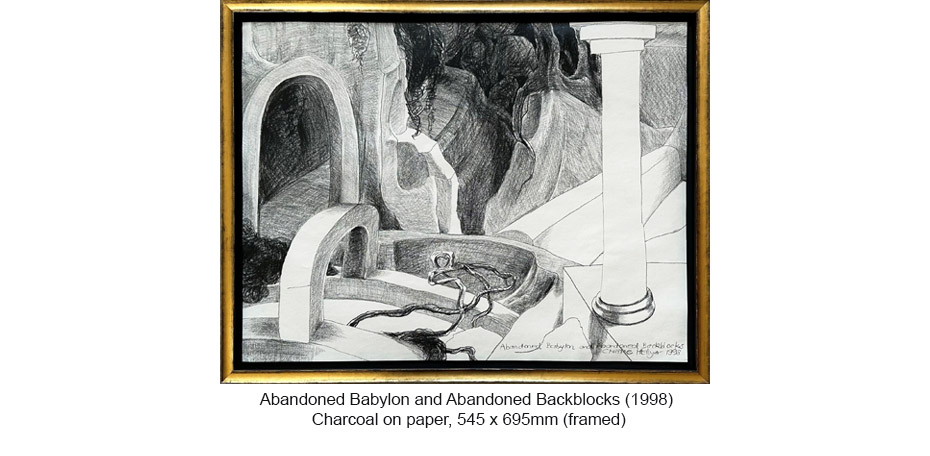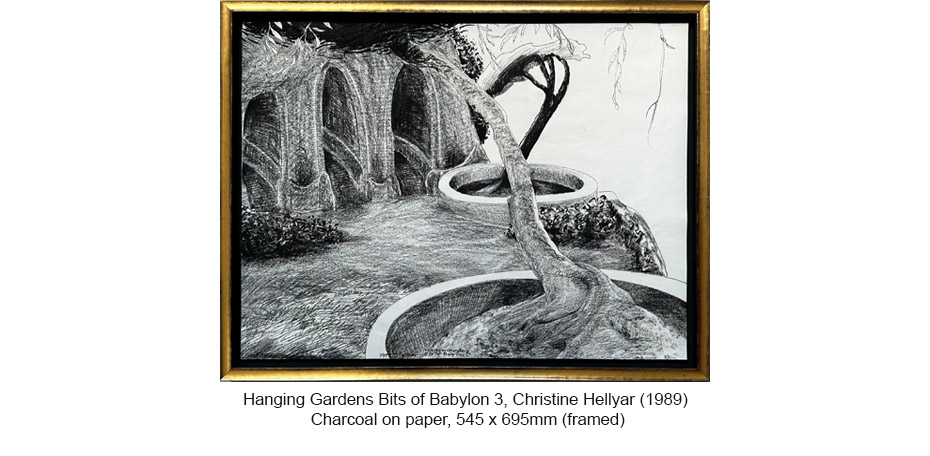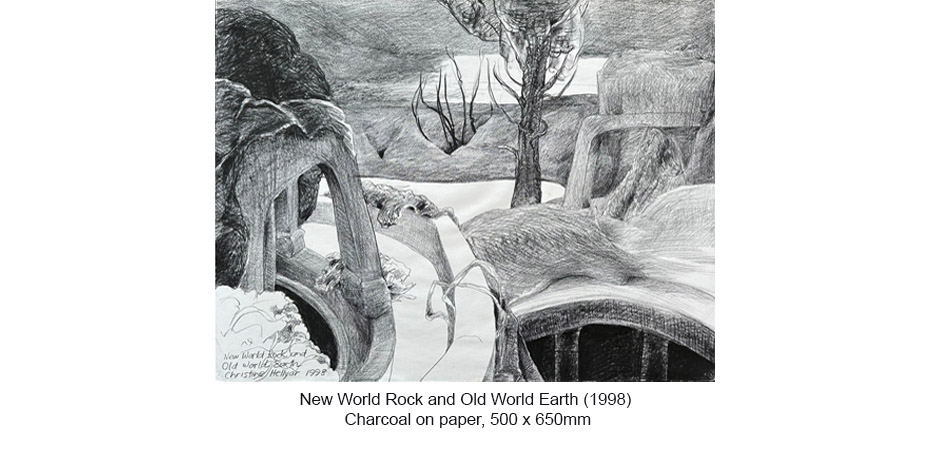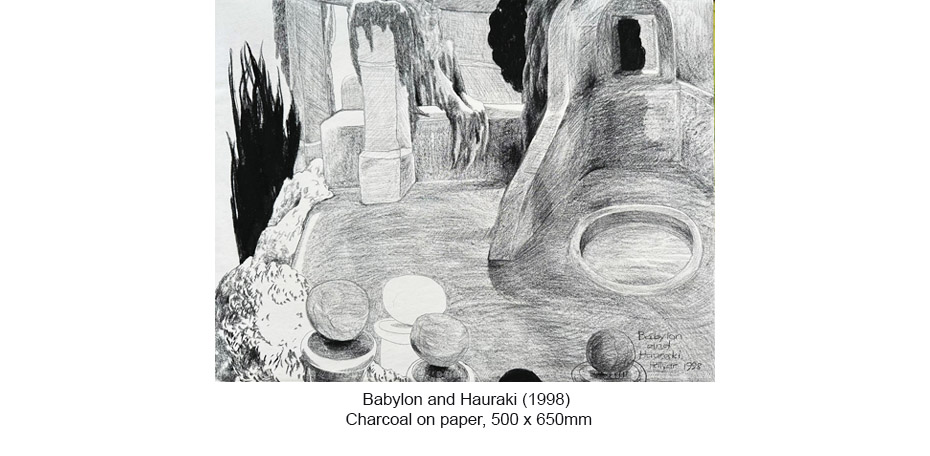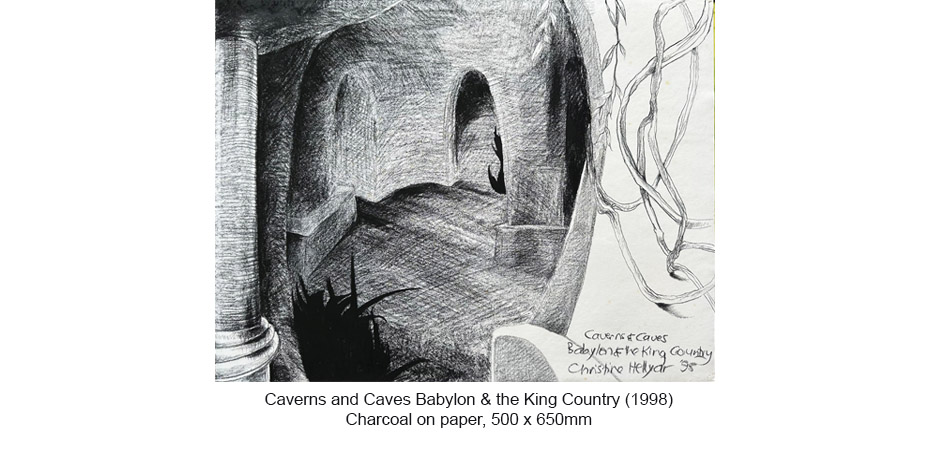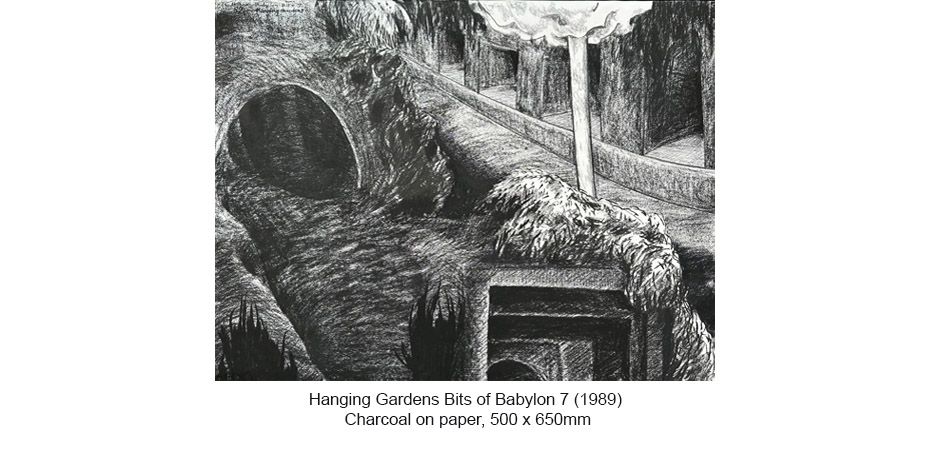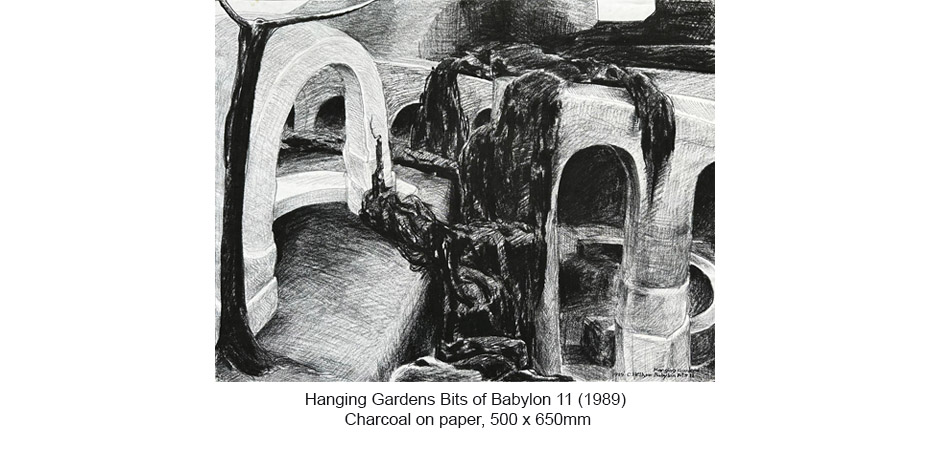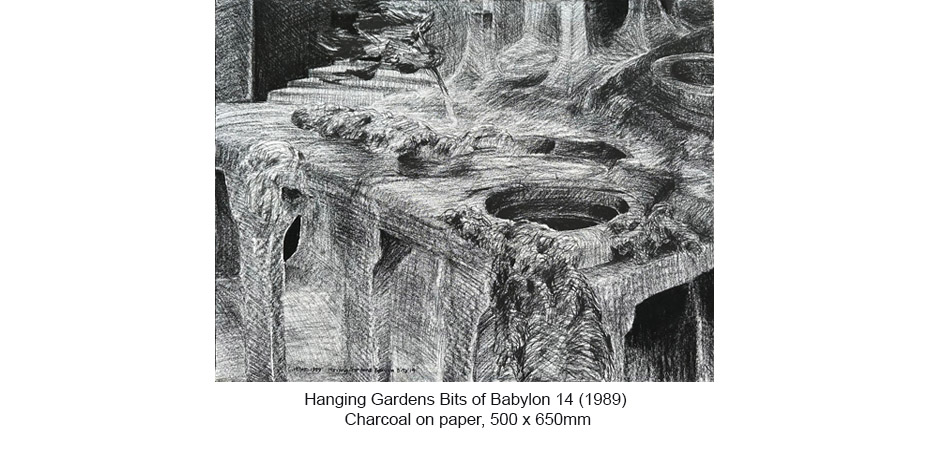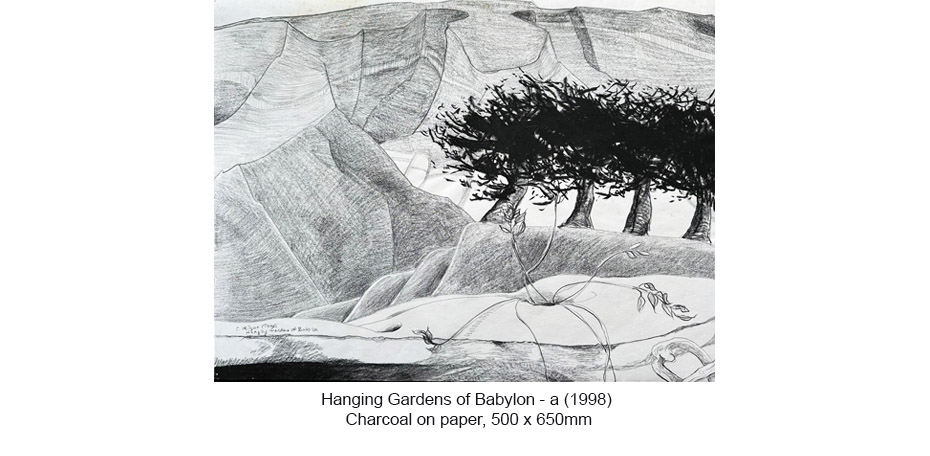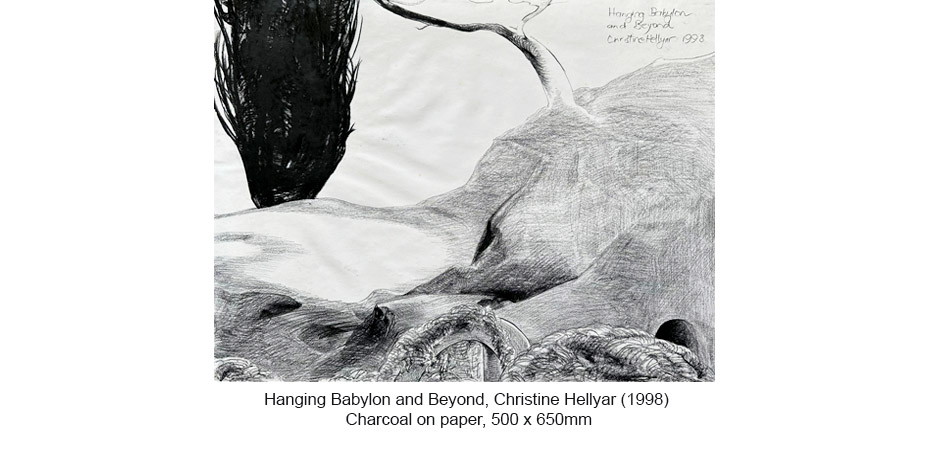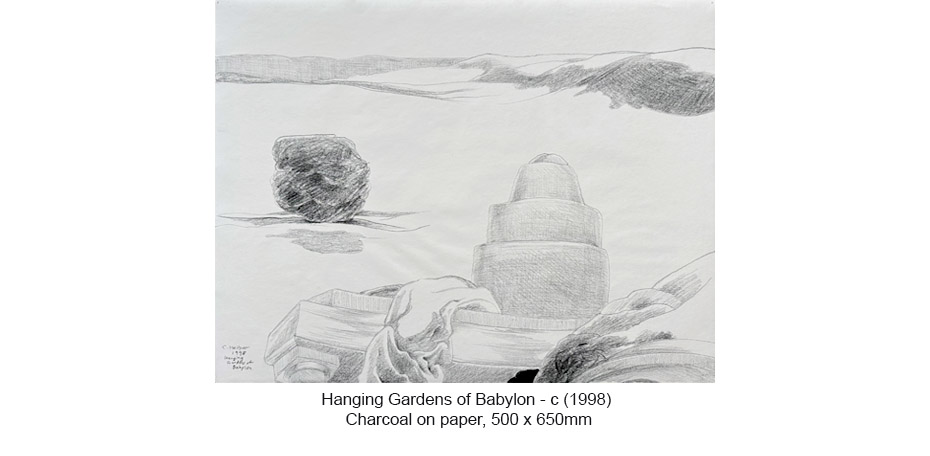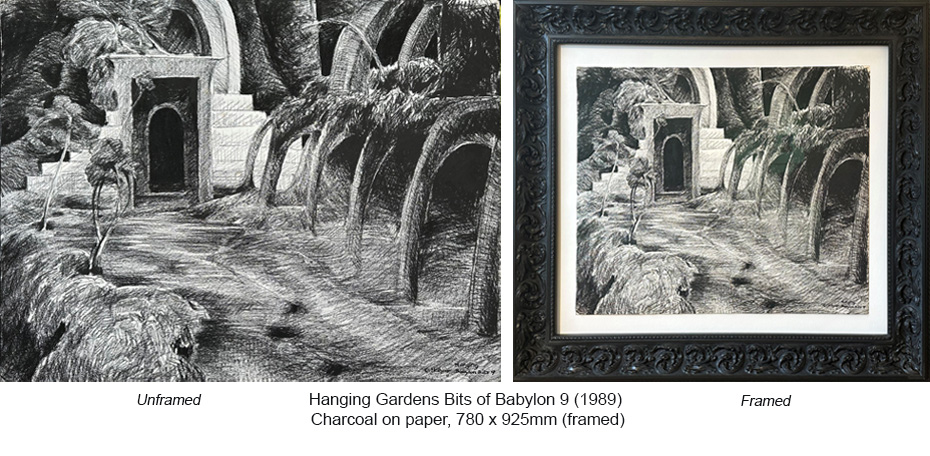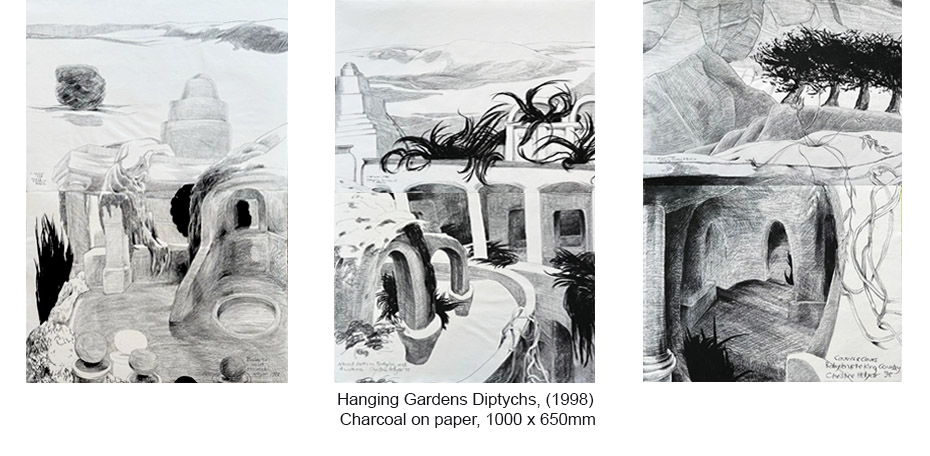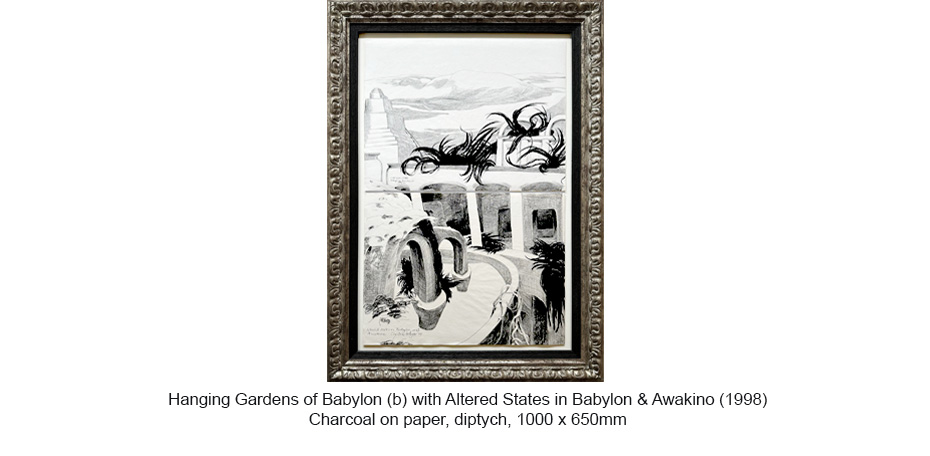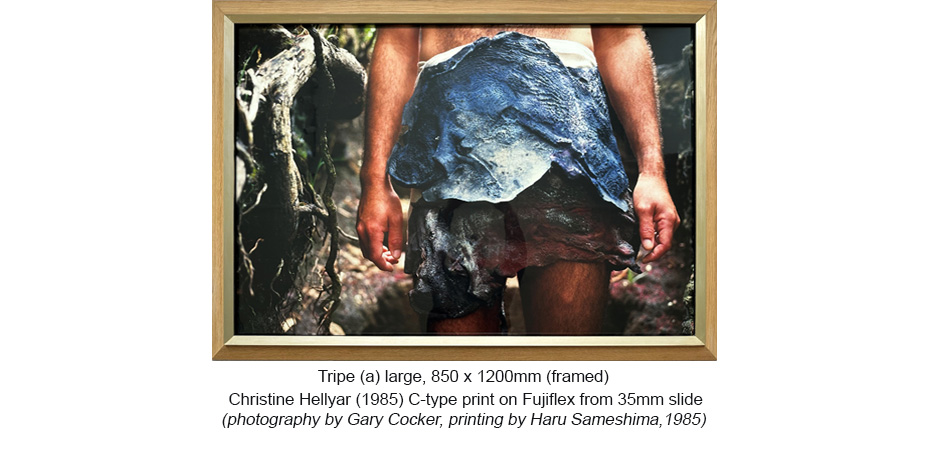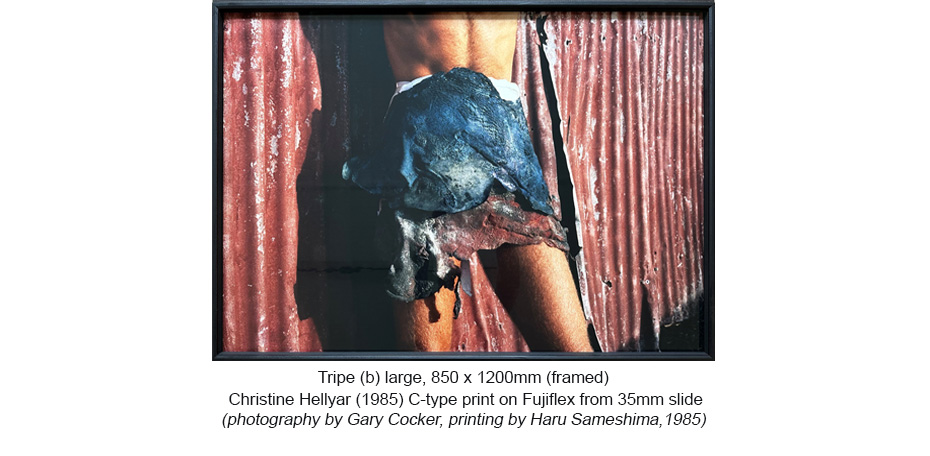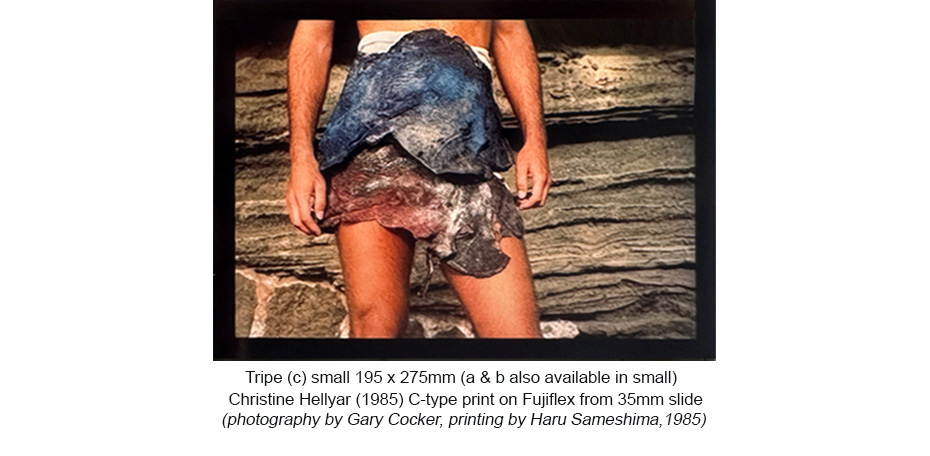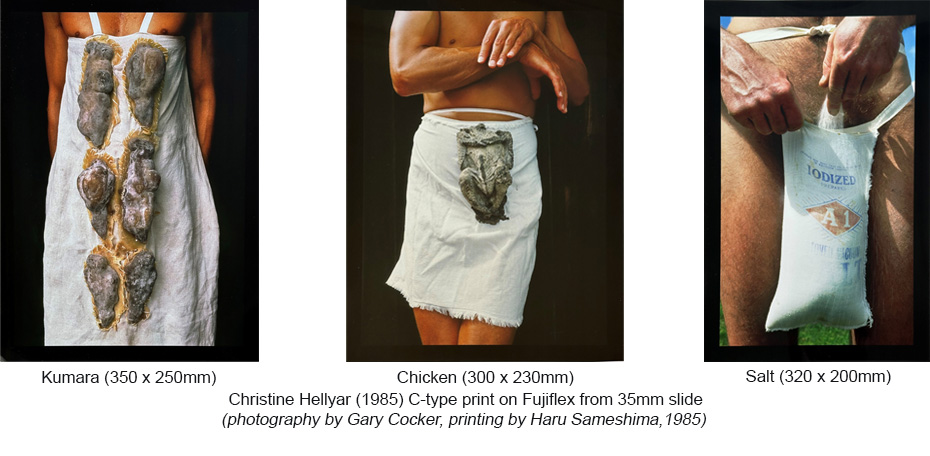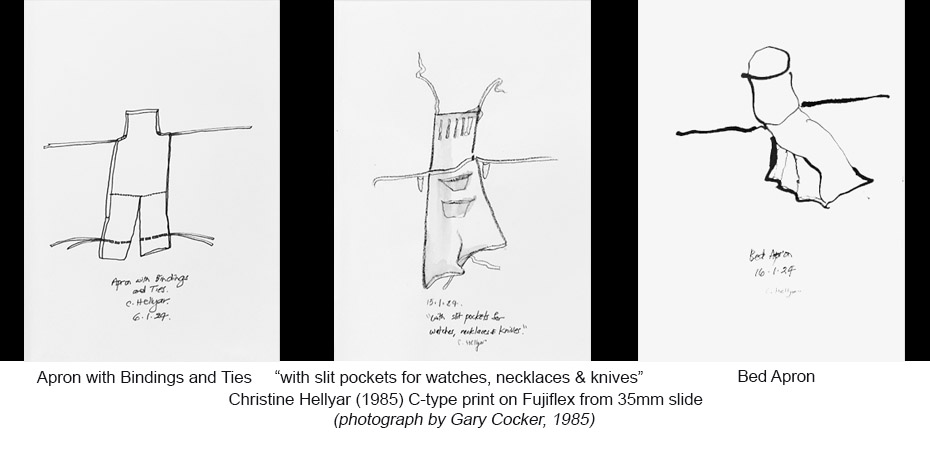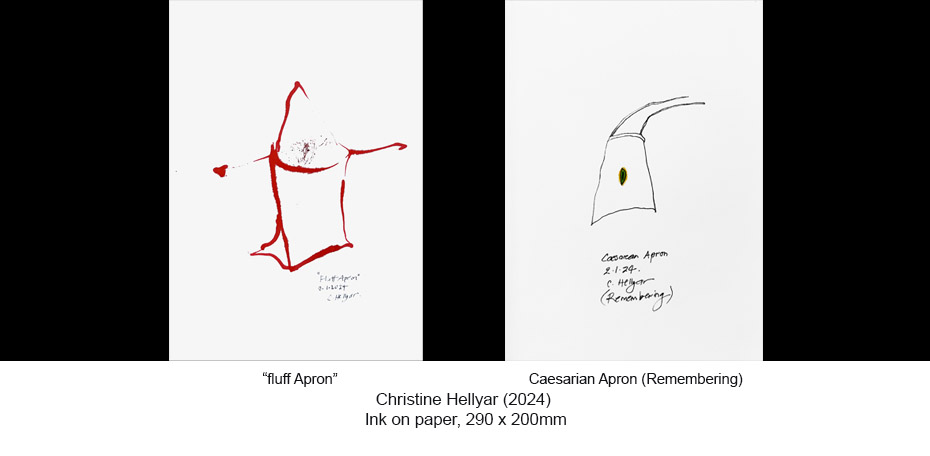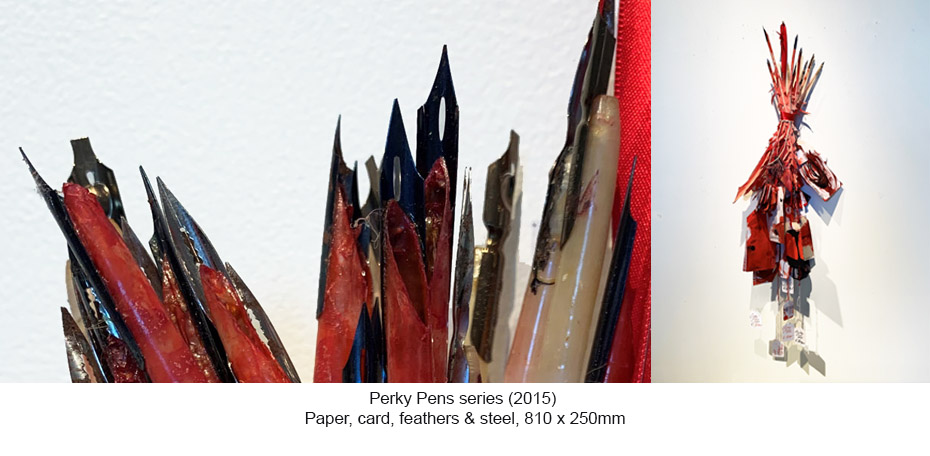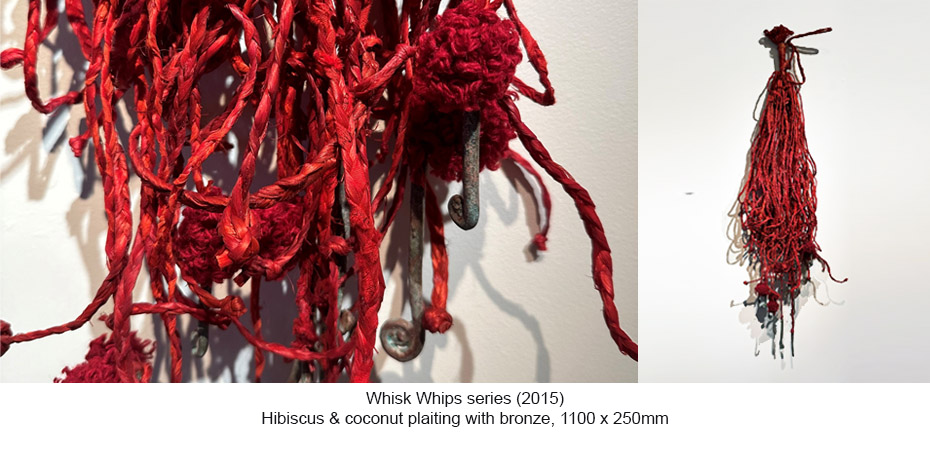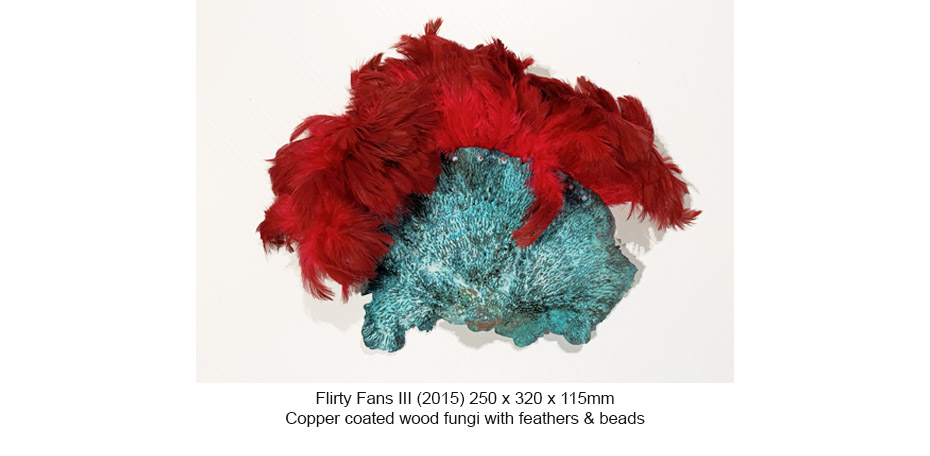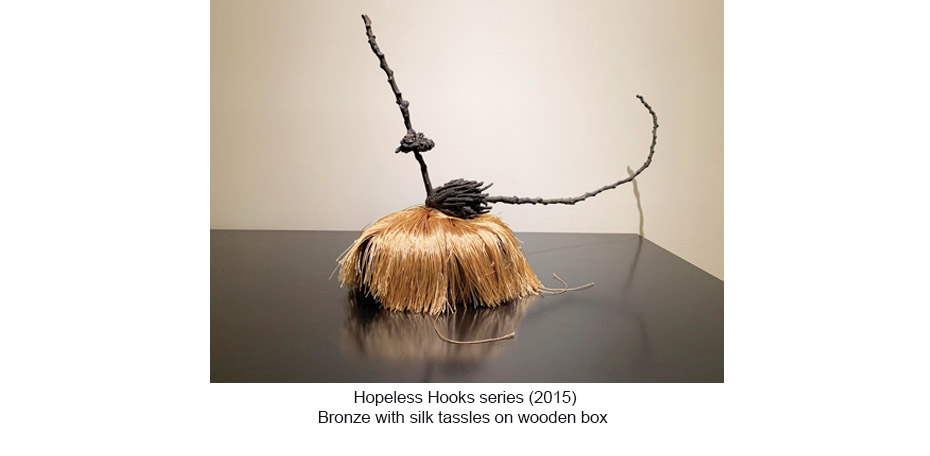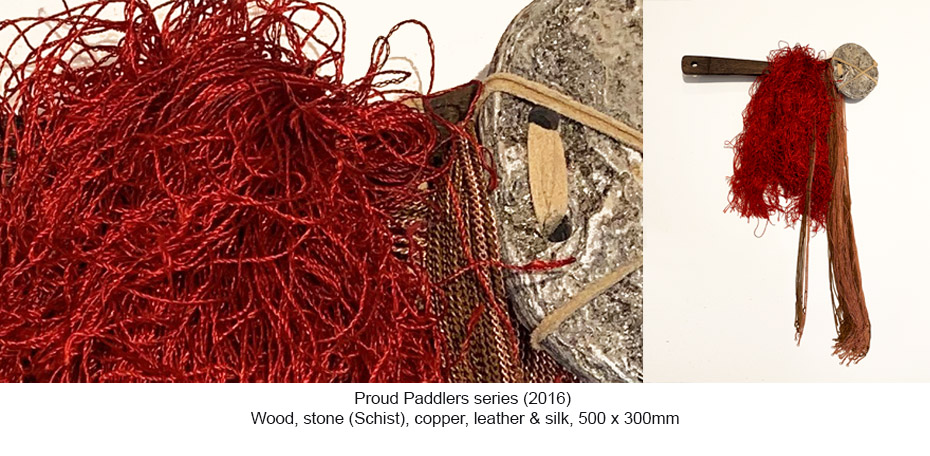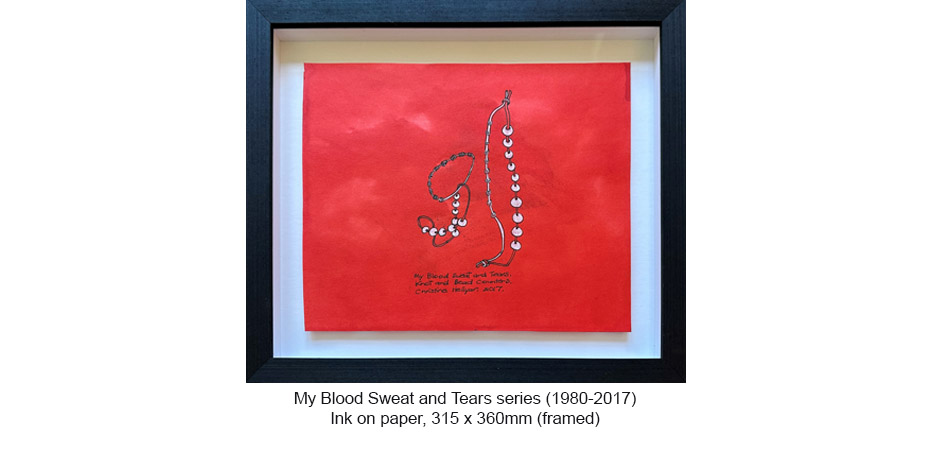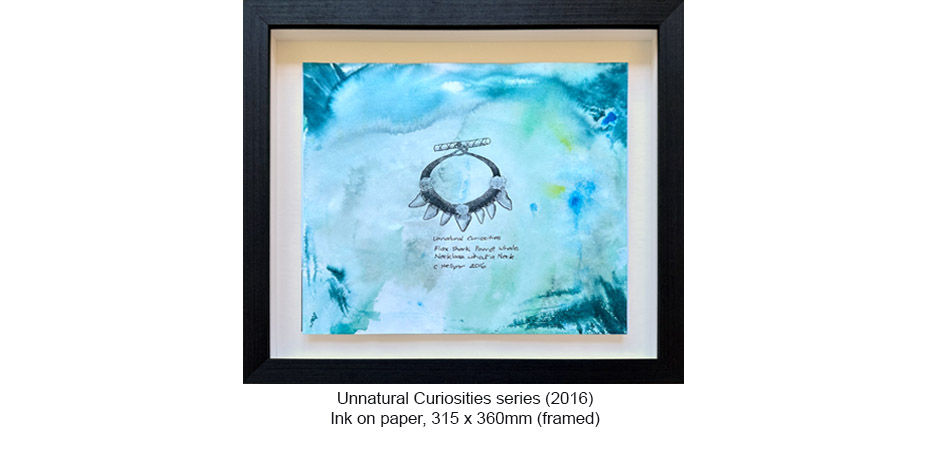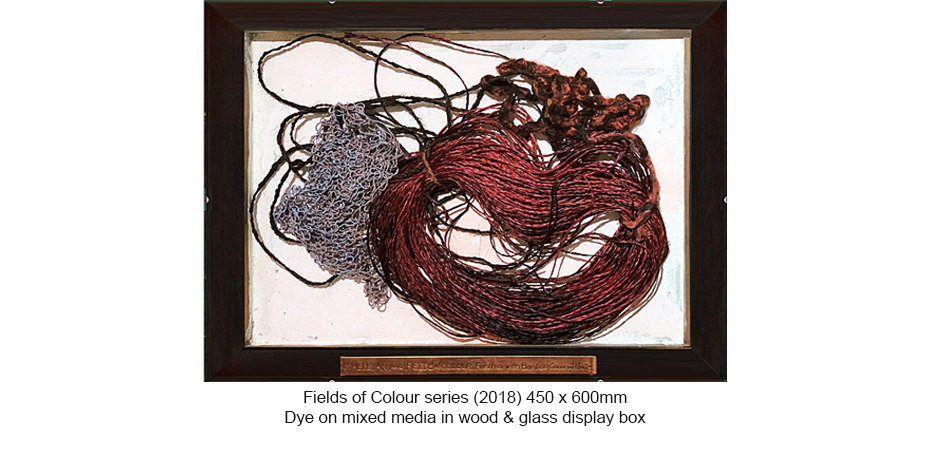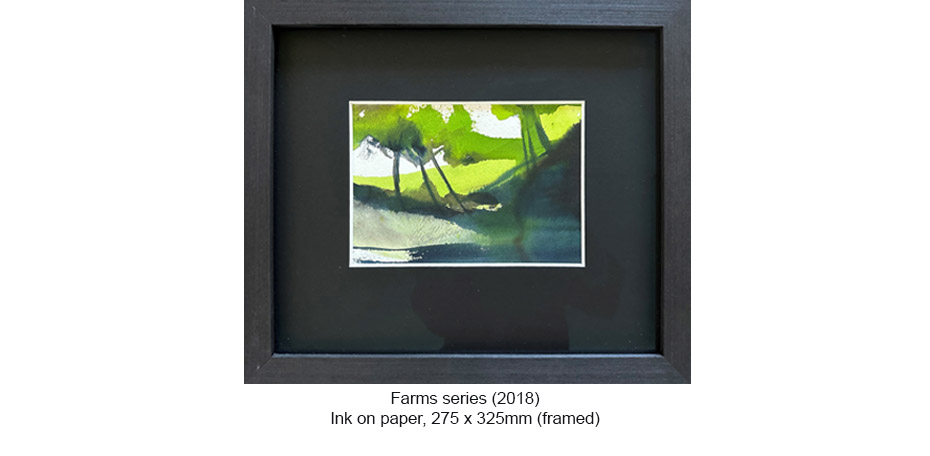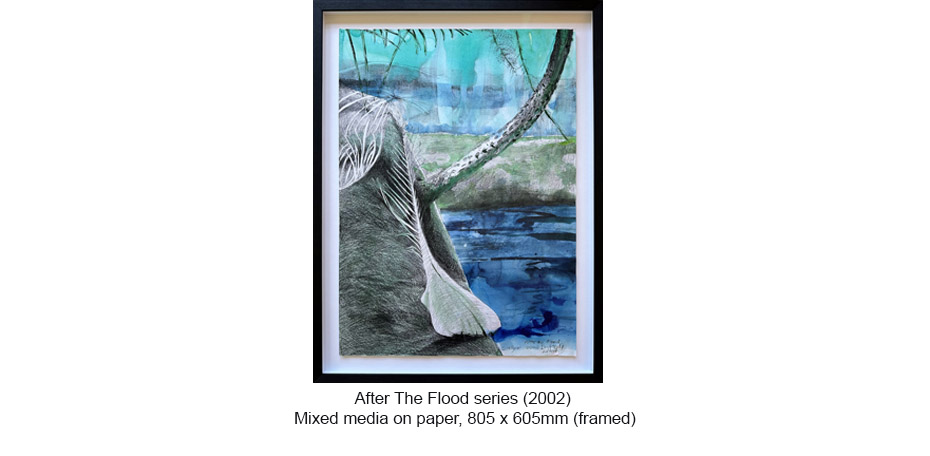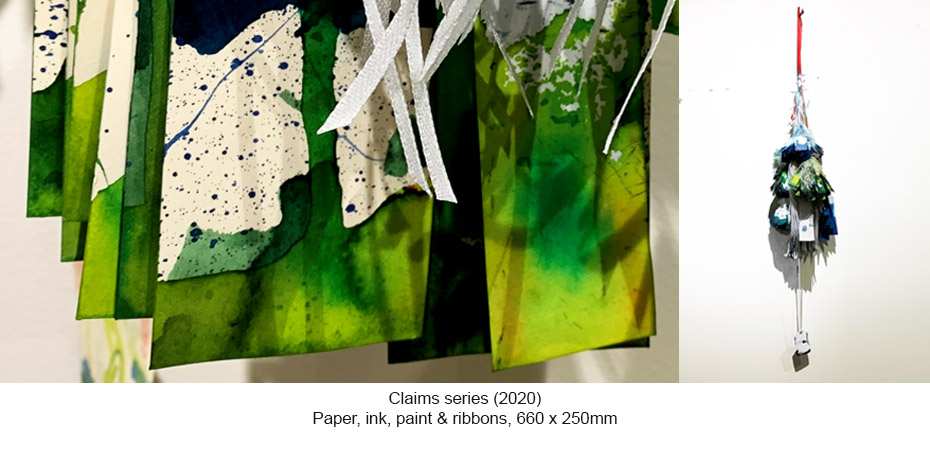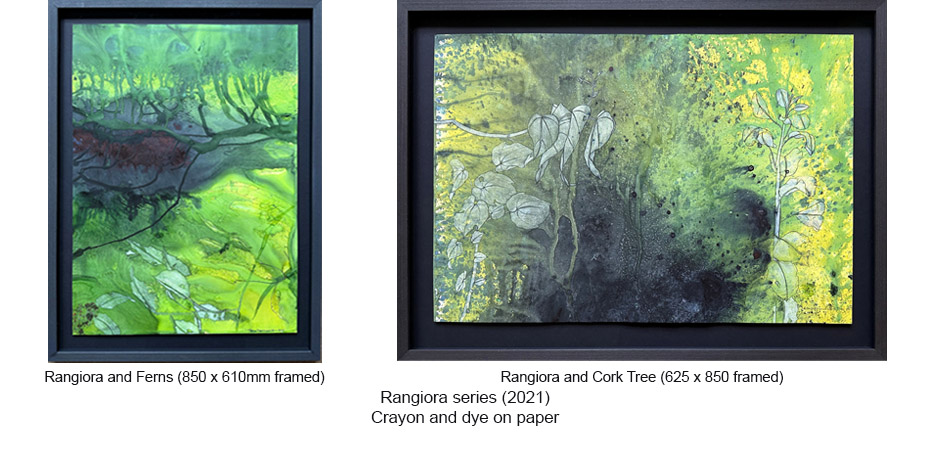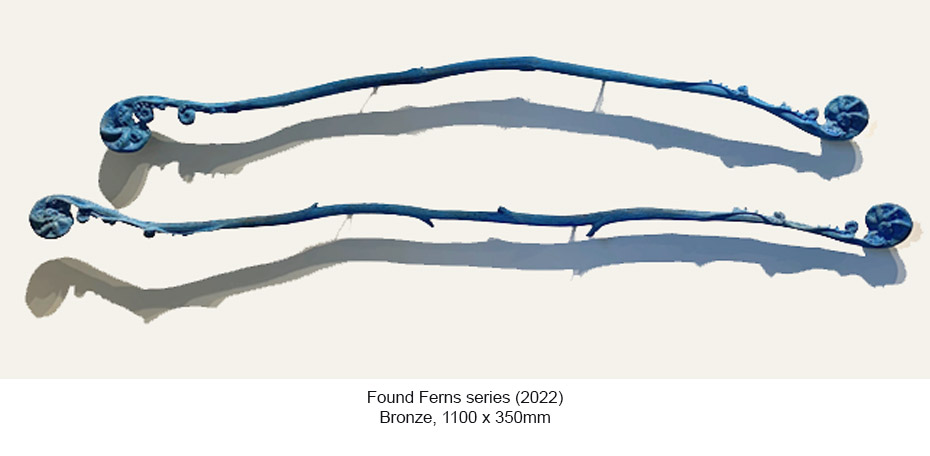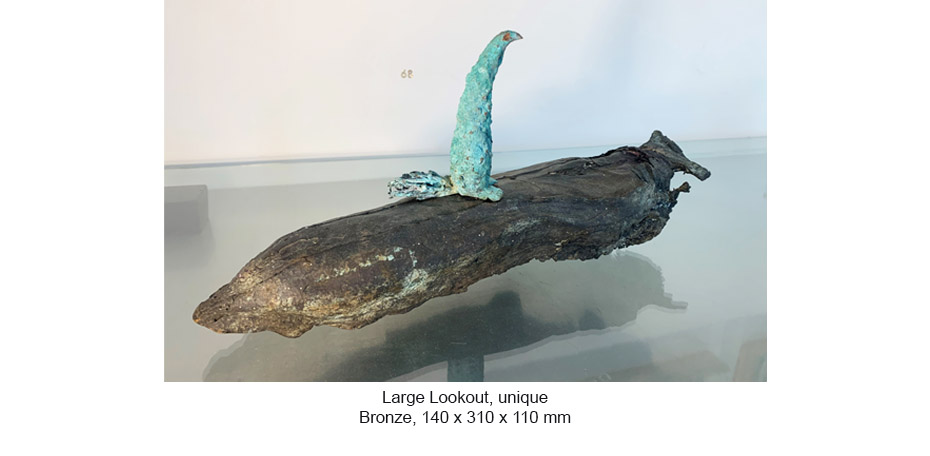Christine Hellyar is one of Aotearoa New Zealand’s most accomplished contemporary sculptors. Born in Ngämotu New Plymouth in 1947, she graduated from Elam School of Fine Arts in 1969 and has exhibited continuously in Aotearoa and internationally since then. For more than five decades, Hellyar has innovated with sculptural processes, and worked across a wide range of materials including cast latex, bronze, textiles, large-scale installation, as well as drawing and photography.
Her work is held in major public collections across Aotearoa, including Te Papa Tongarewa Museum of New Zealand, Te Whanganui-a-Tara Wellington, Auckland Art Gallery, Dunedin Public Art Gallery, Christchurch Art Gallery Te Puna o Waiwhetü, and the Sarjeant Art Gallery, Whanganui.
In 1985, Hellyar produced her first series of apron sculptures. Many were constructed from canvas forms upon which were sewn latex casts of food – tripe, kumara, flounder, a raw plucked chicken. Others consisted only of repurposed bags of salt and flour strapped around the waist. These works were conceived as objects to be worn, distinguishing them from other garment-forms Hellyar had produced, which were designed as wall works.
Hellyar has always been interested in the 7 Wonders of the Ancient World. The oldest, the Great Pyramid of Giza, still stands and in 1978 Hellyar visited the Pyramid. Hellyar has also had an avid interest in Pompeian gardens. From earliest times the garden played a basic role in Roman life, with the hortus (kitchen garden) forming a significant part of the primitive heredium, or family estate. As Rome grew, it eventually became a city famed for beautiful pleasure gardens. Today, in Iraq where the Hanging Gardens of Babylon are said to have flourished long ago, one only finds ruins and rubble. Legend has it that King Nebuchadnezzar of Babylon had the gardens built as a gift to his wife, a Persian princess, to ease her homesickness for the beautiful vegetation and mountains of her native Media (the northwestern part of modern-day Iran). In 1989, Hellyar completed her first series of charcoal drawings of the Hanging Gardens of Babylon.
“I knew a lot about Pompeiian gardens. Structures, waterways and plants were important. We bought a house that had willow and cypress trees and we planted grape, pear and apple trees. I could draw these from my studio in all weather.”
Hanging Gardens & Aprons features charcoal drawings from Hellyar’s Hanging Gardens series (1989/1998) as well as C-type photographs of her 1985 apron sculptures. These photographs were among those recently included in an exhibition titled Set Dressing, at the Govett-Brewster Art Gallery March – June 2024.
A range of other works provide further examples of the diversity of Hellyar’s work – recent crayon and dye botanical drawings, and sculptures from series including Hellyar’s Whisk Whips, Claims, Fields of Colour and Hopeless Hooks. These works utilise a wide range of materials including bronze, hibiscus, wood fungi, feathers, rocks, wood, silk, and paper,


